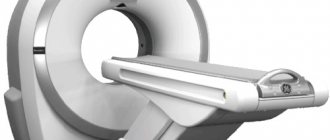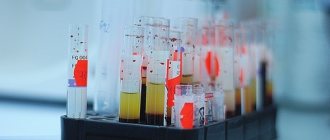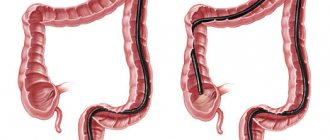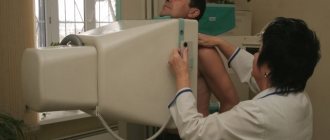If infections caused by potentially harmful bacteria are not detected in time, they can cause disruption of a woman’s reproductive function, spontaneous abortion, premature birth, intrauterine infection of the fetus, as well as complications after surgery on the pelvic organs.
Femoflor-16 is the main method for detecting diseases caused by conditionally harmful microorganisms (bacteria). Based on the detection of pests using real-time PCR. As a result of the study, the doctor sees quantitative and qualitative changes in the microflora of the woman’s intimate organs, which allows him to select the drugs necessary for treatment. Femoflor 16 allows you to determine 25 indicators, including control of material collection, total bacterial mass and 23 groups of microorganisms ( Lactobacillus spp. - the basis of normal microflora, as well as causative agents of vaginitis, cervicitis, urethritis, bacterial vaginosis, candidiasis (thrush), etc.) .
Test "Androflor"
The Androflor analysis allows one-time quantitative assessment of the state of the microflora of the genitourinary system in men, identifying hidden infections, accurately identifying the causative agent of inflammatory processes in prostatitis, urethritis, epididymitis, and also tracking the effectiveness of the therapy in order to adjust the treatment prescribed by the doctor.
Biomaterial for analysis is taken from possible locations of the pathogen. For example, in case of urethritis, a scraping is made from the urethra, and urine must also be provided. To identify the causes of prostatitis, male infertility, with pathological spermogram results and monitoring the treatment of inflammatory diseases, it is necessary to submit ejaculate (sperm), prostate secretion and scraping from the urethra for research.
Study of the biocenosis of the urogenital tract Femoflor-16 (DNA determination) (16 indicators + CME)
What is Femoflor?
The imbalance of the microbiota of the urogenital tract of women, caused by opportunistic microorganisms, is characterized by changes in the qualitative and/or quantitative composition of the normobiota, metabolic and immune disorders, and in some cases clinical manifestations. A particular manifestation of a pronounced biota imbalance is bacterial vaginosis.
Full identification of the etiological structure of the disease will make it possible to timely establish a diagnosis, identify complicated forms of the disease and, accordingly, carry out targeted adequate therapy, including at an early stage, before complications develop.
The method is based on a comprehensive quantitative assessment of biota using real-time (RT) PCR. The number of specific representatives of normo- and opportunistic biota is compared with the total number of microorganisms in order to identify an imbalance of the biota, the degree of its severity and determine the etiological role of specific microorganisms in its development, subject to quality control of obtaining a clinical sample for research.
The method allows you to objectively assess in a short time:
- Qualitative and quantitative composition of biota;
- Differentiate states of physiological balance and imbalance;
- Monitor the quality of the biosample.
Indicators analyzed using the Femoflor 16 kit:
- Control of material intake
- Total bacterial mass
- Lactobacillus spp.
- Enterobacteriaceae
- Streptococcus spp.
- Eubacterium spp.
- Gardnerella vaginalis/Prevotella bivia/Porphyromonas spp.
- Staphylococcus spp.
- Sneathia spp./Leptotrihia spp./Fusobacterium spp.
- Megasphaera spp./Veilonella spp./Dialister spp.
- Lachnobacterium spp./ Clostridium spp.
- Mobiluncus spp./Corynebacterium spp.
- Peptostreptococcus spp.
- Atopobium vaginae
- Ureaplasma (urealyticum + parvum)
- Mycoplasma (hominis +genitalium)
- Candida spp.
Control of material intake (MCM).
A necessary condition for quantitative analysis of urogenital biota is the correct technique for taking scrapings from the surface of the corresponding biotope (urethra, cervical canal, vagina). An indicator of the correct collection of biomaterial is a sufficient amount of human genomic DNA in the sample. The source of this DNA is epithelial cells that enter the sample using the correct technique for taking biomaterial. The optimal value of this indicator should be at least 105.
The indicator is assessed in absolute values.
Total bacterial mass (TBM).
An indicator by which one can judge the total number of bacteria. Evaluated in absolute values. Typically this value is 106 – 108. A MMR value greater than 108 indicates excessive microbial contamination of the biomaterial. The greater the MBP value, the greater the microbial mass in the sample. A MMR value less than 105 corresponds to a reduced number of microorganisms in the sample, which may be a consequence of atrophic processes or antibiotic therapy.
Assessment of normobiota.
The main representative of the normal flora of the urogenital tract in women of reproductive age are representatives of the genus Lactobacillus (LB).
The normobiota is assessed both in absolute values and relative to the total bacterial mass. Normally, the absolute number of lactobacilli practically does not differ from the total number of bacteria, that is, it is 106–108
The relative number of lactobacilli is the difference between Lg10 of total bacterial mass (TBM) and Lg10 of lactobacilli (LB). For example, if the total number of bacteria is 107, Lg10 of this quantity will be equal to 7. Normally, the difference between the logarithms (orders) of MBP and LB should not exceed 0.5, which is determined by the error of the method.
Moderately reduced level of lactobacilli - with a difference in logarithms (orders) from 0.5 to 1.
Significantly reduced level of lactobacilli – with a difference in logarithms (orders) of more than 1.
The smaller the proportion of lactobacilli in the MBP, the more the normal flora is suppressed.
Assessment of aerobic and anaerobic opportunistic microflora.
The quantitative level of aerobic and anaerobic opportunistic microflora can be assessed in both absolute and relative values. Absolute quantities correspond to indicators in bacteriological studies. For example, the number of the microorganism Gardnerella vaginalis is 103.
The relative amount of a particular microorganism is calculated in relation to the amount of Lactobacillus spp., based on the difference between Lg10 of lactobacilli and Lg10 of a particular microorganism, in the same way as the relative amount of lactobacilli themselves is calculated in relation to the total number of bacteria (TBC).
In the urogenital tract of women of reproductive age, both aerobic and anaerobic opportunistic microorganisms can cause pathological processes in the urogenital tract.
Assessment of mycoplasmas, ureaplasmas and fungi of the genus Candida.
Quantitative assessment of the level of mycoureaplasma (Mycoplasma and Ureaplasma), as well as yeast-like fungi of the genus Candida, is carried out only by absolute quantity. The clinically significant level of Mycoplasma and Ureaplasma is 104, yeast-like fungi of the genus Candida spp - 103.
Indications for the purpose of analysis
- The presence of an infectious-inflammatory process in the urogenital tract in women, caused by changes in the quantitative and qualitative composition of opportunistic biota;
- Preventive examination for urogenital infections of women associated with opportunistic biota
Material for research
Scrapings of epithelial cells are used for research.
- from the vagina (posterolateral vaults);
- urethra;
- cervical canal
Criteria for quantitative assessment of biota
The absolute value is approximate and depends on the technique of taking biomaterial and the method of DNA extraction.
A relative indicator - more accurate than an absolute one - is the difference in decimal logarithms (orders of magnitude) between the total bacterial mass (TBM) and lactobacilli (LB), as well as between lactobacilli (LP) and opportunistic pathogens (OPM).
Normocenosis
The state of normocenosis is characterized by the following indicators:
- The total bakmass has a normal level
- Normal flora (Lactobacillus spp) has a normal level.
- Mycoplasmas: Mycoplasma hominis and Ureaplasma (Urealiticum + Parvum) are absent or may be present in quantities of no diagnostic value
- Aerobic and anaerobic opportunistic flora are absent and have a normal level; isolated representatives of the UPM may have a slightly increased level.
- Fungi of the genus Candida are absent or can be detected in quantities that have no diagnostic value.
Moderate dysbiosis
- The state of moderate dysbiosis is characterized by the following indicators:
- The total bakmass has a normal level
- Normal flora (Lactobacillus spp) has a normal or moderately reduced level.
- Mycoplasmas: Mycoplasma hominis and Ureaplasma (Urealiticum + Parvum) may be present in diagnostically significant quantities.
- Aerobic and anaerobic opportunistic flora: part of the opportunistic biota has a slightly and moderately increased level.
- Fungi of the genus Candida may be present in diagnostically significant quantities.
Severe dysbiosis.
The state of pronounced dysbiosis is characterized by the following indicators:
- The total bacterial mass may be normal, increased or decreased.
- Normal flora (Lactobacillus spp) may be absent, have a normal, moderately or significantly reduced level.
- Mycoplasmas: Mycoplasma hominis and Ureaplasma (Urealiticum + Parvum) may be present in diagnostically significant quantities.
- Aerobic and anaerobic opportunistic flora: most representatives of opportunistic microflora have moderately or significantly increased levels.
- Fungi of the genus Candida may be present in diagnostically significant quantities.
Etiological structure of the identified imbalance:
Anaerobic, if the imbalance is caused by anaerobic microorganisms: Gardnerella vaginalis / Prevotella bivia / Porphyromonas spp; Atopobium vaginae; Eubacterium spp; Sneathia spp/Leptotrihia spp/Fusobacterium spp; Megasphera spp/Veilonella spp/Dialister spp; Lachnobacterium spp/Clostridium spp; Mobiluncus spp/Corynebacterium spp; Peptostreptococcus spp.
Aerobic, if the imbalance is caused by aerobic microflora: Enterobacteraceae, Streptococcus spp and Staphylococcus spp
Mixed if the imbalance is caused by any combination of aerobic, anaerobic flora and Candida fungi.
The infectious process caused by fungi of the genus Candida can occur without dysbiotic disorders from the opportunistic flora, and can also be combined with dysbiosis.
Indications for Androflor
- symptoms of inflammatory diseases of the urogenital tract - pain and an unpleasant burning sensation when urinating, discharge from the urethra, lower back pain, frequent urge to urinate, erectile dysfunction, spotting;
- preparing a married couple for IVF, when it is important to establish the possible cause of an unsatisfactory spermogram, the cause of male factor infertility;
- long-term lack of effect of treatment with previously prescribed medications.
The reliability of the result is influenced by a number of factors, so it is necessary to properly prepare for the analysis.
Lactobacillus is a major part of healthy flora
The most important of all bacteria is Lactobacillus. Its colonies make up approximately 95% of the normal microflora in a healthy woman. It is lactobacilli that maintain a high level of resistance of the vaginal biocenosis to foreign infections.
Thus, a normal biocenosis can be considered as the absence of gram-negative cells and the dominance of lactobacilli. The number of anaerobic microorganisms to aerobic ones is determined by the proportion from 2:1 to 5:1.
When the number of lactobacilli decreases or disappears completely, bacterial vaginosis occurs. This disease is characterized by the predominance of cocci and a sharp increase in the number of anaerobes.
Female version: Femoflor test
In order to quickly obtain an objective picture of the state of female microflora, there is a similar analysis for women - “Femoflor”. With it, in one visit to the medical center you can:
- identify sexually transmitted infections, even those that are asymptomatic;
- obtain an objective picture of the state of reproductive health;
- evaluate the effectiveness of anti-inflammatory treatment.
"Femoflor" can also be recommended in preparation for IVF, ICSI, AI and for adjusting the regimen of previously prescribed treatment and assessing its effectiveness.
A doctor may prescribe Femoflor for complaints of pain, itching, unpleasant odor, discomfort when urinating, or bleeding.
For the Femoflor analysis, gynecological and urological smears are taken; Before the study, it is important to follow simple rules. This approach will help avoid distorting the results.
Decoding
When collecting biomaterial, scrapings are performed from the urethra, vagina and cervical canal. The reliability of the diagnosis directly depends on the quality and volume of samples. Manipulations are performed with sterile, disposable instruments, which guarantees the safety and purity of the result.
The material is delivered to the laboratory in a specially prepared test tube, which contains a medium that preserves the biological properties of the transferred microflora. The decoding of femoflora itself is carried out on the day of the visit to the doctor, the necessary medications are prescribed immediately. You can also figure out the result yourself; the form will indicate the norm and your values.
How the biocenosis changes throughout a woman’s life
A certain period of a woman’s life is characterized by the dominance of one or another group of microorganisms. In a newborn baby, microorganisms begin to appear in the vagina on the second day of life. Estrogen hormones received from the mother maintain an acidic environment in the vagina. Its walls secrete glycogen, a polysaccharide that is an excellent breeding ground for lactic acid bacteria (lactic acid bacteria, bifidum bacteria).
Opportunistic microorganisms appear after the third week of life, because the immunity received from the mother gradually weakens. The protective properties of a girl’s biocenosis are not stable, so the hymen plays an important role, preventing pathogenic microflora from entering.
During adolescence, a girl’s body itself produces estrogens, which maintain an optimal acidic environment in the vagina. Conditionally pathogenic microflora is washed away by actively secreted mucus. By the age of 16, a unique biocenosis has already been formed, which persists throughout the childbearing period.
At the age of 16 to 45-50 years (before menopause), about 40 different microorganisms are present in the vagina of a healthy woman, 95% of which belong to the group of non-pathogenic lactic acids, and 5% belong to opportunistic pathogens.
During menopause, the production of the female hormone estrogen, which maintains the acidic environment of the vagina, stops. During this period, lactic acid bacteria die, giving way to staphylococci, candida, and E. coli. This is why cases of vaginitis (inflammation of the vaginal walls), thrush and dysbiosis are common in older women.
What composition of vaginal bioflora is considered normal?
Normally, in the vaginal microflora, the ratio of anaerobic to aerobic bacteria should be from 2:1 to 5:1. During inflammation, the microflora changes to levels from 100:1 to 1000:1. Also, leukocyte and epithelial cells are normally absent.
Various factors can disrupt the normal biocenosis of the vagina:
- weakened immunity due to stress or illness, hypothermia;
- hormonal changes (pregnancy, menopause, abortion, taking contraceptives);
- long-term treatment with antibiotics;
- frequent change of sexual partners;
- diarrhea, dysbacteriosis, vitamin deficiency;
- sudden climate change;
- genitourinary infections;
- synthetic underwear, nylon tights (they do not allow air to pass through and create conditions for the development of anaerobes), daily use of pads.









